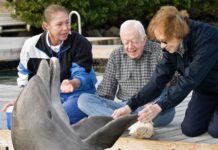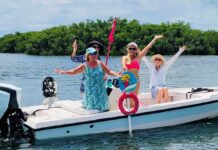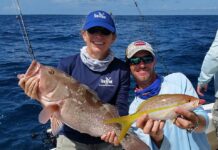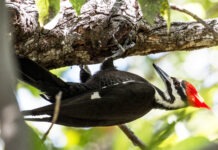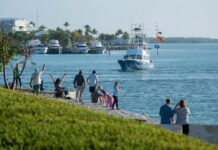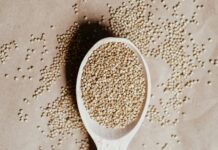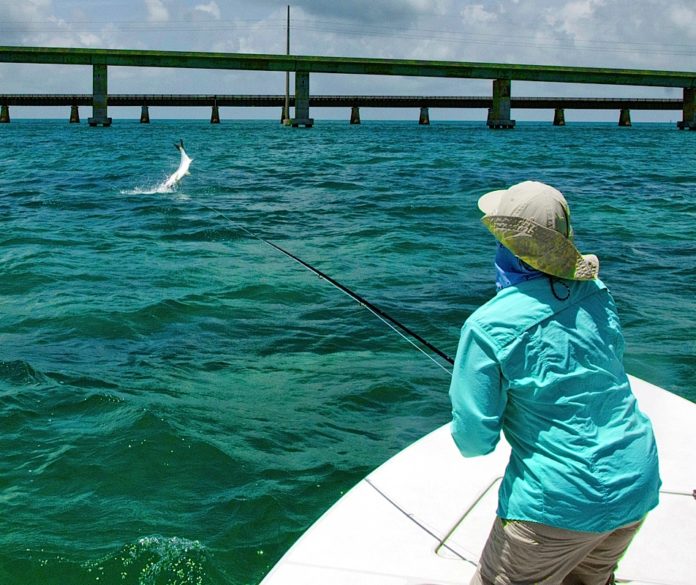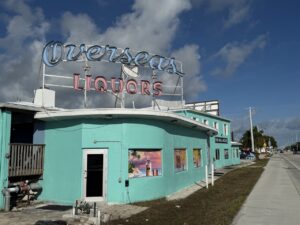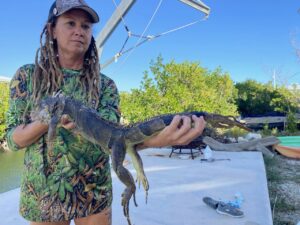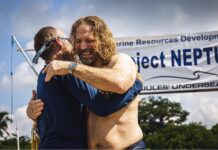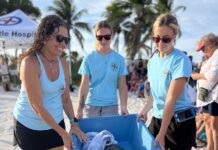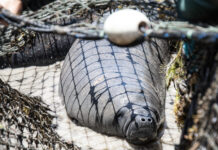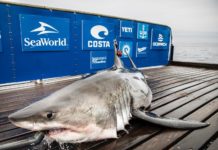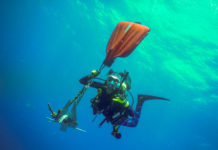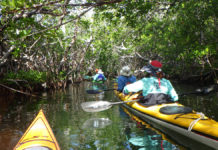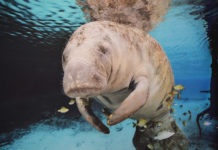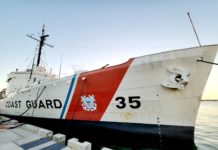Tarpon anglers from far and near eagerly anticipate May in the Keys. It usually provides bright sun, moderate breezes and herds of happy silver kings willing to bite a well-presented fly. Jeannette and I host an annual conclave dubbed “Tarpon Camp” years ago; a half dozen or more friends visit us to spend up to 10 days chasing the big fish with some of Marathon’s finest flats guides. This year the weather and the fish cooperated — at first. On May 1, Jeannette and I joined Capt. Richard Keating, I hooked a pair of fish breaking off both, but she redeemed the family honor by sticking a rambunctious 70-pounder on her fly and battling the tough fish to the side of the skiff for her first tarpon of the season. The next day Mother Nature made like the big bad wolf and started blowing hard. For nearly three weeks winds routinely topped 20 knots and the tarpon hunkered down. Fly anglers and guides suffered bouncing around in rough seas looking at mostly empty water. Their bait fishing brethren persevered though catching plenty of poons under the Bahia Honda and Seven Mile Bridges by drifting live crabs and mullet.
The 20th Annual Loop Golden Fly Tarpon Tournament was held in midst of the big blow. Capt. Tad Burke (Islamorada) and Roger Fernandez (Miami) topped 26 other guide/angler teams to capture the tournament with a come-from-behind win. They also snared the largest tarpon caught. Proceeds from the tournament go the Guides Trust Foundation. The Golden Fly is the first of three major tarpon fly fishing competitions; the Hawley and Gold Cup are up next, both in June.
Fortunately the winds dropped out at the end of last week, the tarpon started swimming happily, and smiles could be seen again among the fly fishers. Expectations are high that the fishing will stay hot especially since the highly anticipated palolo worm hatches should be around the corner. These 3-inch red seaworms live in coral banks and sponges and on a handful of early summer evenings emerge en masse to swim like hell for the reef to engage in their once-in-a-lifetime nuptials. Trying to predict those evenings is very difficult and a lot of us have theories about how to pick the right time. Unfortunately, the worms don’t read our theories and do their thing when they choose. Anglers care deeply because tarpon are addicted to the little worms and go on awesome feeding binges when the palolos appear. Watching 100 pound fish chase down a frantically swimming worm is something you won’t forget particularly when it’s your fake worm fly. Following the new and full moons expect to see plenty of flats boats on evening cruises searching intently for the hatching worms.
Inshore anglers not obsessed with the silver kings have had plenty of options. There are a surprising number of permit on backcountry and ocean flats. There are spotty reports of bonefish too. With the bulk of fishing pressure on the ocean tarpon runs, a lot of these flats, and fish, are empty and neglected for the next few weeks. Those willing to make the run up into Florida Bay near Flamingo can find plenty of redfish and snook. For redfish it’s time to scale down your tackle in the clearer quieter waters. These conditions make the reds spookier than normal and they won’t tolerate a fly, bait or lure clunked on their heads. Use a little more finesse and you should be rewarded.
Congress also provided good news last week for Keys anglers. The long awaited Water Resources Reform and Development Act (WRRDA) — H.R. 3080 — passed both the House and Senate. It includes new approvals for four Everglades restoration projects including the C-111 Canal Spreader Project and a new Biscayne Coastal Wetlands restoration effort. The State built the first phase of the C-111 project which is already improving water quantity and quality flowing through Taylor Slough into the northeastern corner of Florida Bay; the newly authorized Phase II expands the restoration project. This is important because most scientists are convinced a healthier Bay is needed to restore our bonefish populations. The Biscayne project is designed to restore wetlands adjacent to that Bay, improve water quality as well, and benefit an array of fish species.


